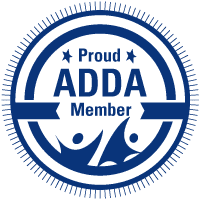The phrase “environment wins every time” comes up frequently in my coaching appointments.
Although we’d like to believe that willpower is enough for us to make progress on our goals, it may not be enough.
Here are phrases I hear regularly:
“I only want to spend 15 minutes a day on Twitter.” (Very few people I know have the willpower to do that.)
“I’m turning off the TV at 10:30 PM no matter what.” (Really? You are in the middle of an episode of The Lincoln Lawyer and you’re turning the TV off? I’m guessing not.)
“I will remember to leave the house in time to pick up the kids.” (How many days have you been late to pick up the kids? Or at least been in a panic that you were going to be late?)
“I only planned to run to the kitchen to get the stapler and come right back.” (I get it. Many times I’ve needed something outside my home office. I planned to get it and head right back, only to be consumed by unloading the dishwasher and reorganizing the silverware drawer.)
“I can’t get the dishes done. They are stacked everywhere!” (I get it. Why wash the dishes if there is a whole cupboard of backups?)
In each of these scenarios, there is a solution that may set us up for success.
Twitter (or any other rabbit hole): Our phones are designed to keep up attached and engaged. It’s the social media platforms to engage with us and keep us connected to their content. In order to increase productivity, make your “time suckers” harder to get to. I encourage individuals to move apps they know are not supporting their goals into a “Do I Really Want To Be Doing This?” folder multiple screens back on their devices. Chances are, if you don’t see Twitter on your home page, you may not be as drawn to it. For an interesting perspective on social media, check out The Social Dilemma.
TV: It can be really hard to turn off the TV in the middle of an engaging show, no matter how much we try to convince ourselves that is what we want. Some clients have found success by putting a timer between the TV and the outlet, only giving the TV power at certain hours of the day. If you want to not watch TV after 10:30 PM, when the TV goes dark due to lack of power, you may be more motivated to head to bed.
Picking up the kids: Yes, transitions are hard, especially if we are transitioning from something we are hyperfocused on. That’s why analog clocks and external alarms are so very important. Analog clocks show the passage of time more clearly than digital clocks do, so the time passage will be more highly reinforced. External alarms will jar us out of what we are doing and remind us that a transition is important. If you are looking for a great tool that does a little bit of both (passage of time and external alarm), try a Time Timer. Hands down, the Time Timer is my favorite productivity tool.
Keep your tools handy: Our brains crave diversion, like taking a break from that report we really don’t want to be working on to get the stapler from the kitchen. We tell ourselves we won’t get sidetracked, but the laundry and the silverware drawer call our names. We think we will be more focused if we can just get “this one more thing put away.” Next thing you know, two hours have passed. Yikes! The key here is to keep enough supplies handy, within a couple of steps, or within a particular room, to get the job done. Not so many that your workspace is cluttered, but enough that you can function without leaving the environment.
Stuff, stuff, and more stuff: As a society, we have a lot of stuff. Count how many coffee cups you have in your house. You get a gold star if it’s less than 10. How many do you really need? The problem with having 10 coffee cups (or plates, or bowls, or water glasses) is that you only need to wash them when they are all dirty. If you don’t have a dishwasher, this can mean a huge pile of dishes that may overwhelm your senses. Try this: only have available what you need for a day or two. That way, you will wash them as you go, not let them pile up. There are tons of other places this process can be put into place. How many pairs of jeans do you have? T-shirts? Shoes? If we have more than we need, the opportunity for clutter is far greater.
Each of these scenarios shows an opportunity for your environment to support your goals. What environmental change, large or small, can you make that will create an opportunity for success?
Side note: The header image is an “after picture” of my office. Here is the “before picture.” A lot of the scenarios I mentioned above came into play when I realized how my environment did not support my productivity goals.

Cindy Jobs, PCAC, ACC
Looking for more information?
Click here for ADHD-friendly Time Management Tools
Click here to schedule a complimentary breakthrough session.
For more helpful information, follow me on Facebook.







